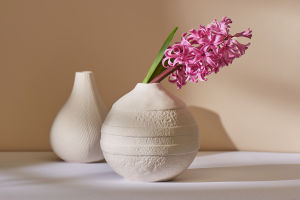Grape hyacinths (Muscari) are lovely spring-blooming bulbs that brighten up any garden with their vibrant clusters of small, bell-shaped flowers.
These cheerful plants are easy to grow and bring a sweet fragrance to your garden. Here's a simple guide on how to plant and care for grape hyacinths.
Ideal Growing Conditions
Light Requirements
Grape hyacinths like full sun or partial shade. They grow best in places that get a lot of sunlight in early spring, especially before nearby trees have their leaves. This makes them perfect for planting under trees that lose their leaves in the fall or in sunny areas of your garden.
Soil Preferences
These bulbs prefer well-drained soil that is neutral to slightly acidic. While grape hyacinths can grow in various soil types, they thrive in sandy or loamy soils. Avoid planting them in overly wet or soggy soil, as this can cause the bulbs to rot.
Planting Grape Hyacinths
When to Plant
The best time to plant grape hyacinth bulbs is in the fall, between September and November. This gives the bulbs time to establish roots before winter arrives.
How to Plant
Start by preparing the soil. Loosen it and remove any weeds, stones, or other debris from the planting area. Dig holes about 3-4 inches deep and space the bulbs 3 inches apart. Plant at least 10 to 25 bulbs in one area to create a lush, vibrant display of flowers. After planting, water the bulbs well. During the growing season, water only when the soil starts to dry out.
Care and Maintenance
Watering
Grape hyacinths need consistent moisture while they're actively growing in spring. As they enter dormancy in the summer, reduce watering to prevent rot. Usually, watering once a week is enough, depending on how much it rains.
Fertilization
In the fall, apply bone meal to the soil at a rate of about 1/4 cup per 100 square feet. This provides essential nutrients that help the bulbs grow and flower in the spring.
Post-Bloom Care
After the flowers fade, remove the spent blooms to prevent seeds from forming, which can cause the plants to spread too much. Let the foliage stay until it turns yellow and dies naturally. This process nourishes the bulbs for the next growing season. Once the leaves have turned yellow, you can cut them.
Propagation
Grape hyacinths can spread through bulb division or seeds. To divide the bulbs, wait until summer when the plants are dormant. Dig up the bulbs, separate them, and replant them in a new spot. This method is quicker and more effective than growing from seeds, which can take two to three years to bloom.
Container Growing
Grape hyacinths can also be grown in pots. Choose pots that have good drainage holes and fill them with soil that drains well. Plant the bulbs just like you would in the ground, making sure they have enough space to grow. Using containers helps keep their growth under control, which is great for gardeners who want to limit how much they spread.
Conclusion
Grape hyacinths are a beautiful addition to any garden, offering bright color and fragrance in the spring. With proper planting and care, these hardy bulbs will thrive and multiply, providing stunning displays year after year. Whether planted in the ground or in containers, grape hyacinths are sure to bring joy and beauty to your garden.


